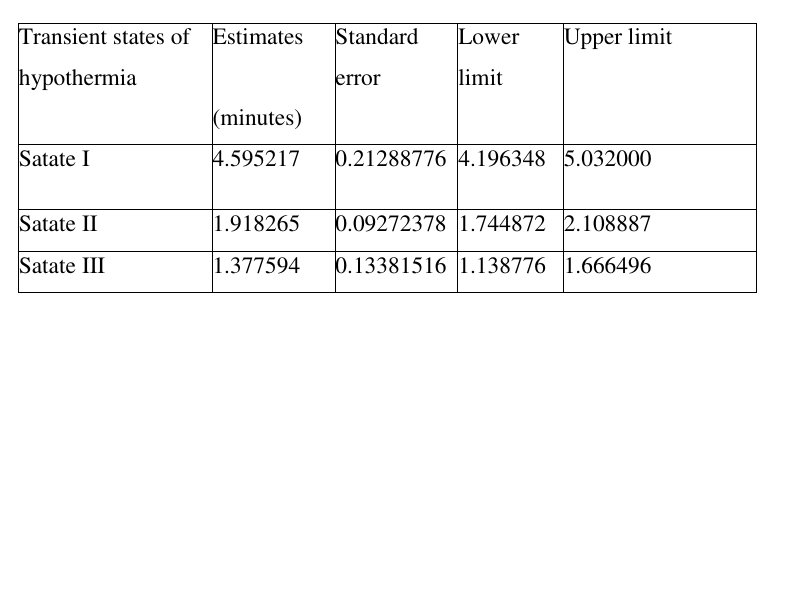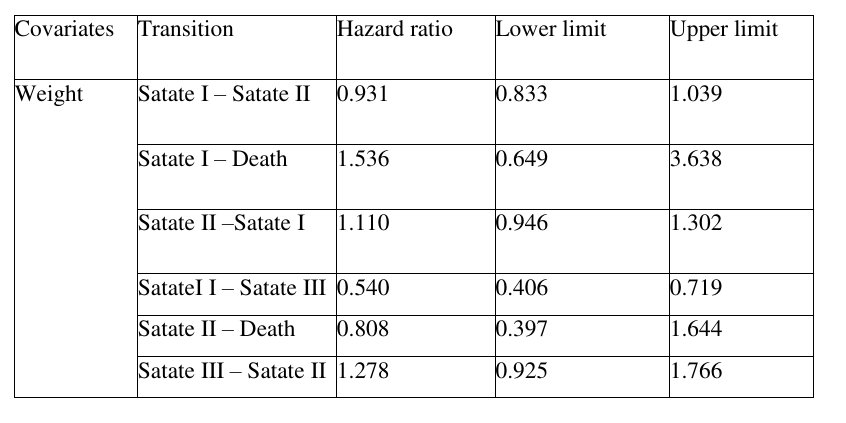MODELING THE PROGRESSION OF NEONATAL HYPOTHERMIA DISEASE PROGRESSION USING DATA ON NEW BORN AT DILLA UNIVERSITY REFERRAL HOSPITAL APPLICATION OF MULT
Conference
64th ISI World Statistics Congress
Format: CPS Abstract
Session: CPS 66 - Statistical modelling III
Tuesday 18 July 5:30 p.m. - 6:30 p.m. (Canada/Eastern)
Abstract
When a baby's heat loss surpasses his or her ability to produce heat, the baby's body temperature drops below the usual range, and babies' body temperatures fluctuate dramatically after delivery. If newborn hypothermia is not treated promptly, it can have catastrophic implications.
At Dilla University Referral Hospital, the current study intends to apply a Hidden Markov Model to neonatal hypothermia and its related risk factors in infants. Hypothermic neonates hospitalized to Dilla University Referral Hospital's Neonatal Intensive Care Unit were evaluated retrospectively from January 2018 to January 2022. In total, 2400 infants were admitted to the Neonatal Intensive Care Unit. However, 518 newborns were selected using a simple random sampling technique and included in this study. A multi-state Hidden Markov model was used to quantify the effect of factors on the transition rate in different state of hypothermia.
Transitioning from mild hypothermia to severe or moderate hypothermia was 74.8 percent likely, while progressing to a normal condition was just 25.2 percent likely. For three different levels of birth weight, normal, low, and very low birth weight, the average time spent in a severe or moderate hypothermia state was 4.9, 4.62, and 4.33 minutes, respectively, and for low, moderate, and normal Appearance Pulse Grimace Activity Respiration scores, it was 5,4.45, and 4 minutes. Furthermore, the mean sojourn duration in a severe or moderate hypothermia condition was 4.83, 4.6, and 4.32 minutes for three different levels of high, normal, and low pulse rate, respectively.
The rate of transition from severe or moderate hypothermia to mild hypothermia, the Appearance Pulse Grimace Activity Respiration score on the rate of transition from mild hypothermia to normal state, and the pulse rate on the rate of transition from mild hypothermia to severe or moderate hypothermia were all significantly affected by neonate weight. Those with a very low birth weight, a low Appearance Pulse Grimace Activity Respiration score, and a higher heart rate deserve special attention even in the Neonatal Intensive Care Unit. As a result, the use of preventive strategies , should be prioritized
Figures/Tables
image1

image2

image3

